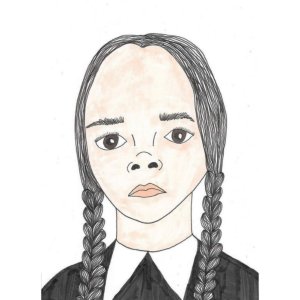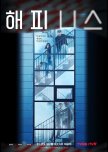This drama is not your usual zombie apocalypse genre. It is not merely about humans on the verge of survival and constantly running away from zombies. They never even used the term “zombie” in the drama as they don’t treat the infected as dead or lifeless. Instead, they treated it as a virus and an illness called The Mad Person’s Disease. Thus, don’t expect it to be solely about zombies swarming in to eat raw human flesh and brain just like in Train to Busan or The Walking Dead. It is more about the communal spirit and class disparity during pandemic and some police and medical procedural to investigate the causes and cure of the disease.
I appreciate how this drama gave off a raw, natural, and cozy sanctuary despite the somewhat horrific subject matter. It is obvious that the drama was not made with a very high budget. There were no uses of CGIs neither extremely exaggerated editing. I really like to commend the make-up department here for doing such a good job. The action choreography was also deserving of credits.
Even the romance and drama here were not overly exaggerated. The romance was more subtle, mature, and responsible rather than being too fluffy and cheesy, which was reasonable considering the subject matter and context of the situation they are in. Unlike most KDramas also where it becomes more melodramatic and makjang during the later episodes, this stayed true to its perfect balance of thriller, suspense, and drama.
The Seyang Forest Apartments symbolizes or represents happiness. The poster alone shows that this apartment is central to the setting and overall plot of Happiness. From the very first episode, we can already see that Sae-bom has always been looking forward to having her own apartment. For her, this would be her ultimate happiness because she wanted to change the ugly memories of her chaotic home with a much better and peaceful one. During the lockdown and pandemic, we can see the hindrances to one’s happiness in this apartment. There are the class disparities (numerous floors and ladders going up and down), egoistic and selfish nature motivated by one’s survival (different rooms in the apartment), external factors such as the pandemic, itself (being locked inside the apartment). Due to these, Sae-bom was even threatened to be kicked out of their apartment—her happiness. But, just like what a natural human instinct to do, she disagreed and fought for her happiness.
The last episode’s title was Happiness Is With You. Indeed, it wasn’t the house, itself, or the fact that one can have a shelter to sleep on that makes a happy home. It was evident on what happened to the Seyang Apartments. Happiness is in the communal spirit; the collective motivation to do and grow better together. If only most were able to put down their pride and prejudice, the apartment wouldn’t have turned so chaotic.
I would have given this show a perfect score if not for the last two episodes. The ending also seemed rushed to me. The message of the apartment and happiness were given more focus that the other details outside the apartment were overlooked. I wanted more elaboration regarding the causes of the disease or whether the pill was really the beginning of it all. There was also no explanation or just a more subtle clue about what happened to the corrupt and higher officials. In addition, the martial law part bothered me a bit. For some, it may come off as a propaganda or perhaps, it just shows a lot about the reality of how most of our government reacts during these kinds of situations which was really lacking and unhelpful.
I appreciate how this drama gave off a raw, natural, and cozy sanctuary despite the somewhat horrific subject matter. It is obvious that the drama was not made with a very high budget. There were no uses of CGIs neither extremely exaggerated editing. I really like to commend the make-up department here for doing such a good job. The action choreography was also deserving of credits.
Even the romance and drama here were not overly exaggerated. The romance was more subtle, mature, and responsible rather than being too fluffy and cheesy, which was reasonable considering the subject matter and context of the situation they are in. Unlike most KDramas also where it becomes more melodramatic and makjang during the later episodes, this stayed true to its perfect balance of thriller, suspense, and drama.
The Seyang Forest Apartments symbolizes or represents happiness. The poster alone shows that this apartment is central to the setting and overall plot of Happiness. From the very first episode, we can already see that Sae-bom has always been looking forward to having her own apartment. For her, this would be her ultimate happiness because she wanted to change the ugly memories of her chaotic home with a much better and peaceful one. During the lockdown and pandemic, we can see the hindrances to one’s happiness in this apartment. There are the class disparities (numerous floors and ladders going up and down), egoistic and selfish nature motivated by one’s survival (different rooms in the apartment), external factors such as the pandemic, itself (being locked inside the apartment). Due to these, Sae-bom was even threatened to be kicked out of their apartment—her happiness. But, just like what a natural human instinct to do, she disagreed and fought for her happiness.
The last episode’s title was Happiness Is With You. Indeed, it wasn’t the house, itself, or the fact that one can have a shelter to sleep on that makes a happy home. It was evident on what happened to the Seyang Apartments. Happiness is in the communal spirit; the collective motivation to do and grow better together. If only most were able to put down their pride and prejudice, the apartment wouldn’t have turned so chaotic.
I would have given this show a perfect score if not for the last two episodes. The ending also seemed rushed to me. The message of the apartment and happiness were given more focus that the other details outside the apartment were overlooked. I wanted more elaboration regarding the causes of the disease or whether the pill was really the beginning of it all. There was also no explanation or just a more subtle clue about what happened to the corrupt and higher officials. In addition, the martial law part bothered me a bit. For some, it may come off as a propaganda or perhaps, it just shows a lot about the reality of how most of our government reacts during these kinds of situations which was really lacking and unhelpful.
Was this review helpful to you?


















